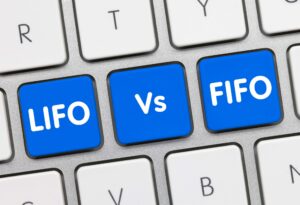
Suppliers are often willing to negotiate on the price of what they sell you if you can buy in bulk, commit to an exclusive agreement, or sign onto a long-term partnership. Any business that sells products needs to know its COGS, or cost of goods sold. You should record the cost of goods sold as a debit in your accounting journal. Its primary service doesn’t require the sale of goods, but the business might still sell merchandise, such as snacks, toiletries, or souvenirs.

That’s because it’s one of the costs of doing business and generating revenue. You most likely will need a tax professional to calculate COGS for your business income tax return. But you should know the information needed for this calculation, so you can collect all the information cost of goods sold to include in this report. When inventory is artificially inflated, COGS will be under-reported which, in turn, will lead to a higher-than-actual gross profit margin, and hence, an inflated net income. LIFO is where the latest goods added to the inventory are sold first.
Direct Costs Vs Indirect Costs
During periods of rising prices, goods with higher costs are sold first, leading to a higher COGS amount. Return of Partnership Income, is used to calculate the net income, profit or loss, of partnerships. The cost of goods sold is calculated on Form 1125-A and included on Line 2 of Form 1065. Cost of goods manufactured is the total cost incurred by a manufacturing company to manufacture products during a particular period. General and administrative expenses are those related to running a business such as office rent or professional services such as legal fees or accounting services. To sum up, COGS is an important aspect of financial reporting and operational efficiency.
- If he weren’t, he would need to count the number of books left in inventory at month end, and assign a value to them in order to properly calculate his cost of goods sold.
- These costs include the costs of direct labour, direct materials, and manufacturing overhead costs.
- If a business has more inventory on hand, the COGS will be higher.
- If you are filing your business tax return on Schedule C, make sure this schedule is included in the version for your personal tax return.
- Take the time to run not only a cost analysis but also an analysis of how this could impact the image of your business as a whole.
By the end of production, the cost to make gold rings is now $150. Using LIFO, the jeweler would list COGS as $150, regardless of the price at the beginning of production. Using this method, the jeweler would report deflated net income costs and a lower ending balance in the inventory. During inflation, the FIFO method assumes a business’s least expensive products sell first. As prices increase, the business’s net income may increase as well.
Best Accounting Software for Small Businesses
This calculation captures production costs that wouldn’t be included in any other way, and these costs reduce your business taxable income. FIFO stands for First In, First Out, and is an accounting method whereby inventory items purchased first are assumed to be sold first. This method is most accurate when pricing products remains relatively stable over time. If you manufacture the rocking chairs yourself, you need to include the cost of materials needed to manufacture the rocking chairs such as wood, nails, varnish, and paint. You’ll also need to include the direct labor cost of producing the chairs, as they can’t be sold unless they are assembled. According to Generally Accepted Accounting Principles (GAAP), COGS is defined as the cost of inventory items sold to customers in a given period of time.
- Consistency helps businesses stay compliant with generally accepted accounting principles (GAAP).
- Cost of goods manufactured is the total cost incurred by a manufacturing company to manufacture products during a particular period.
- Now, since the inventories are purchased at different prices, the challenge that arises is to divide the cost of goods available for sale between the cost of goods sold and the ending inventory.
- COGS determines how profitable the product or service the company offers.
- Depending on which method is used, the ending inventory balance will change.
